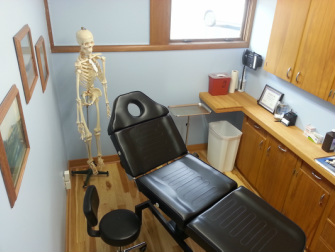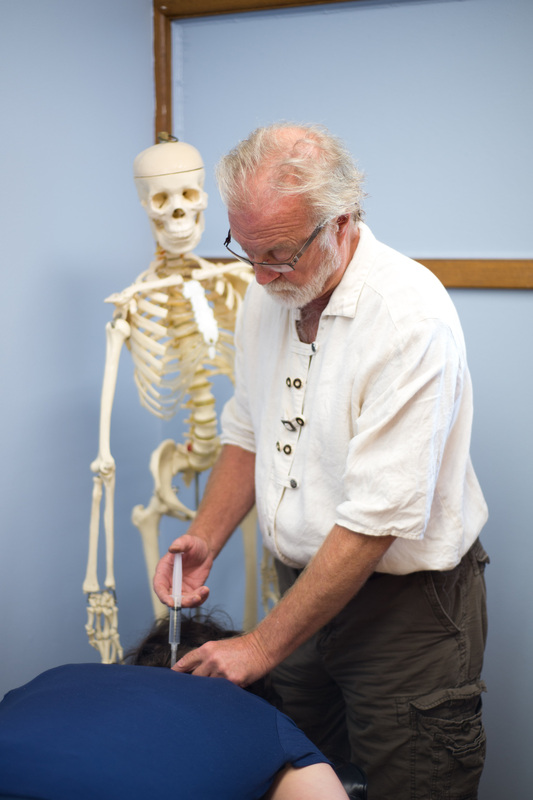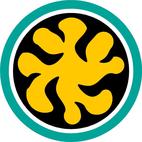Pain Management

Pain is designed to act as a signal to the body that it is in danger or is otherwise experiencing something that’s adverse to the body’s well being. After an injury, it is appropriate for pain to occur to instruct the person to refrain from moving a joint for example. We all therefore expect pain after trauma. Trauma includes bruising, fractures, strained muscles, sprained ligaments, injuries resulting in disk injuries of the spine, lacerations and of course surgical procedures.
In the cases listed above, the pain should begin to subside in days to, at most, weeks. Pain that lasts longer than 4-6 weeks should be looked upon as possibly inappropriate. That is, no longer serving the best interests of the person and possibly representing a new “disease” – chronic pain. A typical example of such a phenomenon is a person who strains his or her back during heavy lifting. He experiences pain in the lower back, muscle spasm, loss of motion of the spine and possibly shooting pain down one or both legs. These symptoms are at the beginning of the injury, totally normal. The person then goes to the doctor and gets x-rays, which are usually normal. A back strain is diagnosed, and analgesics and muscle relaxants are prescribed and rest is recommended along with possibly heat/cold applications. The pain and other symptoms gradually subside and the person recovers. In some cases, however, the symptoms get better but persist forever. Even after a period of months, there is still pain, spasm and loss of motion. Re-evaluation and even physical therapy often fails to turn up a specific cause of the symptoms or their resolution. In this situation, a chronic pain syndrome has taken hold. Standard therapy and even chiropractic may offer no improvement.
In these types of cases, alternative modalities must be directed against the symptoms. These include:
Each of these will be described below.
1. German Neural Therapy
One cause of chronic pain can be a “short-circuit” in the nervous system. These short circuits are really over activity of the sympathetic nervous system resulting from trauma or surgery. This over activity results in constriction of the vessels in the region. This leads to a loss of blood flow to the area, which of course, deprives the area of injury of needed oxygen and nutrients. In addition, toxic substances in the tissue build up since there is a decreased flow throughout the region. This leads to more pain, more spasm and more constriction. A vicious circle is created.
The brothers Huneke of Duesseldorf, Germany developed German Neural Therapy starting in the 1940’s. As are many great innovations in medicine, its discovery was partially accidental. In fact, they had earlier introduced Nerve Blocks using Procaine into medicine in 1928. Procaine is the first local anesthetic developed as an alternative to cocaine. It is both a local anesthetic for nerves and nerve ganglia, an anti-inflammatory agent and it enables injured cells that have become depolarized to reestablish their polarity and thus reactivate them in their function. These compounds result in freeing up blood flow to an injured area, reestablishment of electrical polarity in the area, which reactivates the cells and allows them to heal. The end result is a reduction or elimination of pain. In some cases people who have suffered symptoms for years get excellent results.
2. Prolo / Sclerotherapy
Ligaments hold our joints together. Following injuries, or due to chronic degenerative changes such as those that occur in osteoarthrosis, these ligaments may become stretched or lax. This results in instability in the area in question, which then leads to abnormal movement of the area. The body tries to stabilize the area by tensing the local musculature. This muscle spasm leads to build-up of toxic substances and loss of blood flow to the area. More pain and spasm ensue. This vicious cycle manifests as chronic pain and in the long run physical degeneration of the tissue. The cervical spine (neck), lumbosacral spine (low back) and the knees are common sites for this phenomenon. While Neural Therapy can temporarily help patients with ligamentous laxity problems, attention must be directed to strengthening and stabilizing the ligaments involved. This is accomplished by a treatment known as sclerotherapy or prolotherapy. It was discovered in the 1920’s by an orthopedic surgeon named Hackett when he was searching for answers as to why people didn’t get better after disk surgery for low back pain. After experimenting on animals by injecting substances into the ligamentous attachments of injured areas, he was able to prove that such treatments strengthened such ligaments and stabilized joints. Human experiments proved the treatment effective and it is now being increasingly practiced for chronic pain conditions around the world. In our office, we use concentrated dextrose to cause a sclerosing of the lax ligaments. The temporary inflammation induced by such injections causes the body to send cells known as fibroblasts into the area and these cells lay down collagen to strengthen the ligaments. This treatment is done in conjunction with German Neural Therapy and the other modalities available at our Clinic.
3. Naprapathic Therapy
Massage and ligamentous manipulation by hand is also an important part of our clinic’s approach to the treatment of chronic pain. Stretching ligaments, releasing trigger points in muscles and gentle realignment of spinal and other joints are all age-old techniques, which aid in an overall system to correct underlying causes of chronic pain. Just as the use of procaine injections can release tight, spastic areas to improve flow of energy and blood, manual techniques can improve the health of damaged areas. The addition of these manual techniques can usually shorten the time it takes to help a problem and this means the need for fewer injections. Both types of therapies are often needed because needles cannot address some imbalances (for example, deep thoracic vertebral rotations) and massage or manipulation can’t easily deal with chronically lax ligaments. The latter must be treated with prolotherapy. In some cases, scars become a focus of electrical imbalance leading to chronic pain in the scared area or in areas distant from the scar via system-wide electrical feedback loops. Treatment of scars necessitates procaine injections.
In summary, the comprehensive holistic treatment of chronic pain problems is an exciting option for patients who have failed to get well with the standard therapies of physical therapy, surgery, chiropractic and drugs. The great majority of patients treated by the combination of methods available at our office have obtained significant improvement in their symptoms of pain.
In the cases listed above, the pain should begin to subside in days to, at most, weeks. Pain that lasts longer than 4-6 weeks should be looked upon as possibly inappropriate. That is, no longer serving the best interests of the person and possibly representing a new “disease” – chronic pain. A typical example of such a phenomenon is a person who strains his or her back during heavy lifting. He experiences pain in the lower back, muscle spasm, loss of motion of the spine and possibly shooting pain down one or both legs. These symptoms are at the beginning of the injury, totally normal. The person then goes to the doctor and gets x-rays, which are usually normal. A back strain is diagnosed, and analgesics and muscle relaxants are prescribed and rest is recommended along with possibly heat/cold applications. The pain and other symptoms gradually subside and the person recovers. In some cases, however, the symptoms get better but persist forever. Even after a period of months, there is still pain, spasm and loss of motion. Re-evaluation and even physical therapy often fails to turn up a specific cause of the symptoms or their resolution. In this situation, a chronic pain syndrome has taken hold. Standard therapy and even chiropractic may offer no improvement.
In these types of cases, alternative modalities must be directed against the symptoms. These include:
- German Neural Therapy
- Prolo / Sclerotherapy
- Naprapathic Therapy
Each of these will be described below.
1. German Neural Therapy
One cause of chronic pain can be a “short-circuit” in the nervous system. These short circuits are really over activity of the sympathetic nervous system resulting from trauma or surgery. This over activity results in constriction of the vessels in the region. This leads to a loss of blood flow to the area, which of course, deprives the area of injury of needed oxygen and nutrients. In addition, toxic substances in the tissue build up since there is a decreased flow throughout the region. This leads to more pain, more spasm and more constriction. A vicious circle is created.
The brothers Huneke of Duesseldorf, Germany developed German Neural Therapy starting in the 1940’s. As are many great innovations in medicine, its discovery was partially accidental. In fact, they had earlier introduced Nerve Blocks using Procaine into medicine in 1928. Procaine is the first local anesthetic developed as an alternative to cocaine. It is both a local anesthetic for nerves and nerve ganglia, an anti-inflammatory agent and it enables injured cells that have become depolarized to reestablish their polarity and thus reactivate them in their function. These compounds result in freeing up blood flow to an injured area, reestablishment of electrical polarity in the area, which reactivates the cells and allows them to heal. The end result is a reduction or elimination of pain. In some cases people who have suffered symptoms for years get excellent results.
2. Prolo / Sclerotherapy
Ligaments hold our joints together. Following injuries, or due to chronic degenerative changes such as those that occur in osteoarthrosis, these ligaments may become stretched or lax. This results in instability in the area in question, which then leads to abnormal movement of the area. The body tries to stabilize the area by tensing the local musculature. This muscle spasm leads to build-up of toxic substances and loss of blood flow to the area. More pain and spasm ensue. This vicious cycle manifests as chronic pain and in the long run physical degeneration of the tissue. The cervical spine (neck), lumbosacral spine (low back) and the knees are common sites for this phenomenon. While Neural Therapy can temporarily help patients with ligamentous laxity problems, attention must be directed to strengthening and stabilizing the ligaments involved. This is accomplished by a treatment known as sclerotherapy or prolotherapy. It was discovered in the 1920’s by an orthopedic surgeon named Hackett when he was searching for answers as to why people didn’t get better after disk surgery for low back pain. After experimenting on animals by injecting substances into the ligamentous attachments of injured areas, he was able to prove that such treatments strengthened such ligaments and stabilized joints. Human experiments proved the treatment effective and it is now being increasingly practiced for chronic pain conditions around the world. In our office, we use concentrated dextrose to cause a sclerosing of the lax ligaments. The temporary inflammation induced by such injections causes the body to send cells known as fibroblasts into the area and these cells lay down collagen to strengthen the ligaments. This treatment is done in conjunction with German Neural Therapy and the other modalities available at our Clinic.
3. Naprapathic Therapy
Massage and ligamentous manipulation by hand is also an important part of our clinic’s approach to the treatment of chronic pain. Stretching ligaments, releasing trigger points in muscles and gentle realignment of spinal and other joints are all age-old techniques, which aid in an overall system to correct underlying causes of chronic pain. Just as the use of procaine injections can release tight, spastic areas to improve flow of energy and blood, manual techniques can improve the health of damaged areas. The addition of these manual techniques can usually shorten the time it takes to help a problem and this means the need for fewer injections. Both types of therapies are often needed because needles cannot address some imbalances (for example, deep thoracic vertebral rotations) and massage or manipulation can’t easily deal with chronically lax ligaments. The latter must be treated with prolotherapy. In some cases, scars become a focus of electrical imbalance leading to chronic pain in the scared area or in areas distant from the scar via system-wide electrical feedback loops. Treatment of scars necessitates procaine injections.
In summary, the comprehensive holistic treatment of chronic pain problems is an exciting option for patients who have failed to get well with the standard therapies of physical therapy, surgery, chiropractic and drugs. The great majority of patients treated by the combination of methods available at our office have obtained significant improvement in their symptoms of pain.


